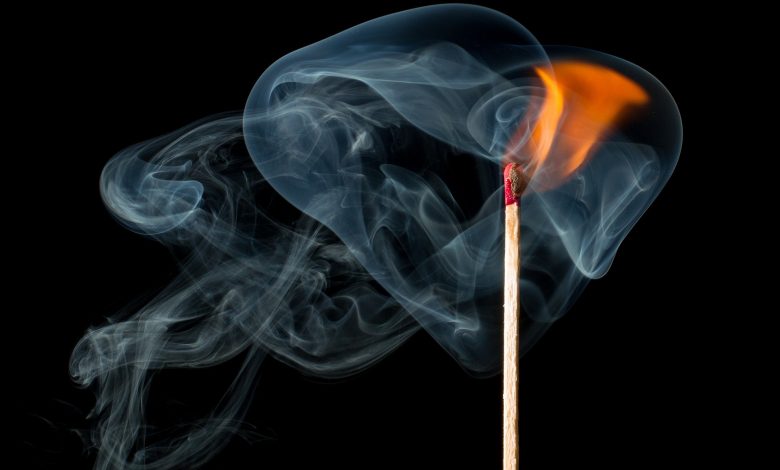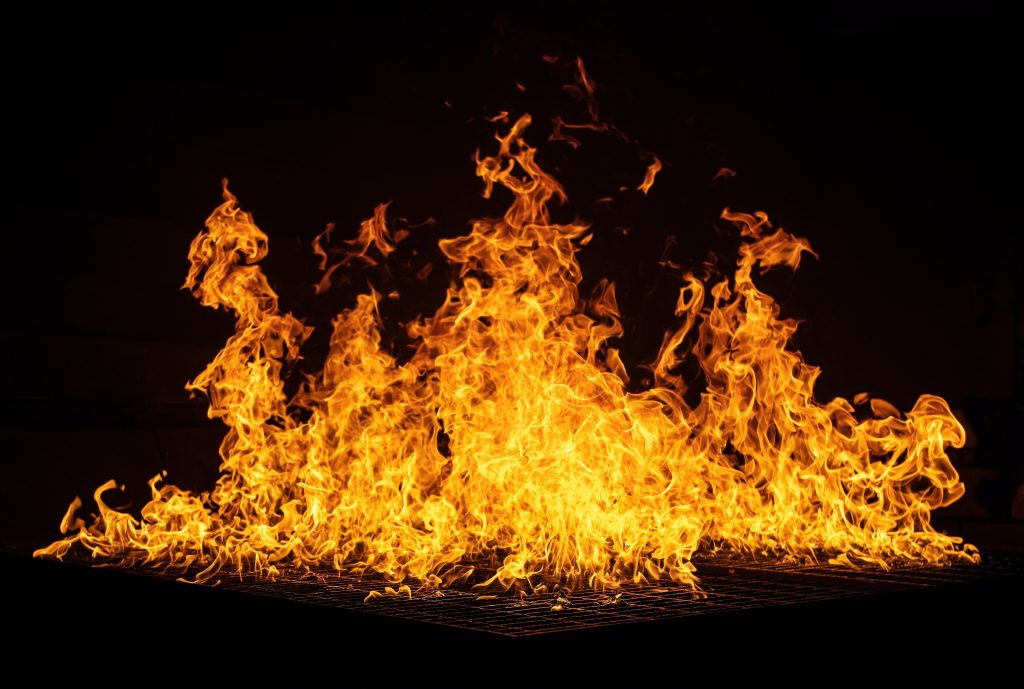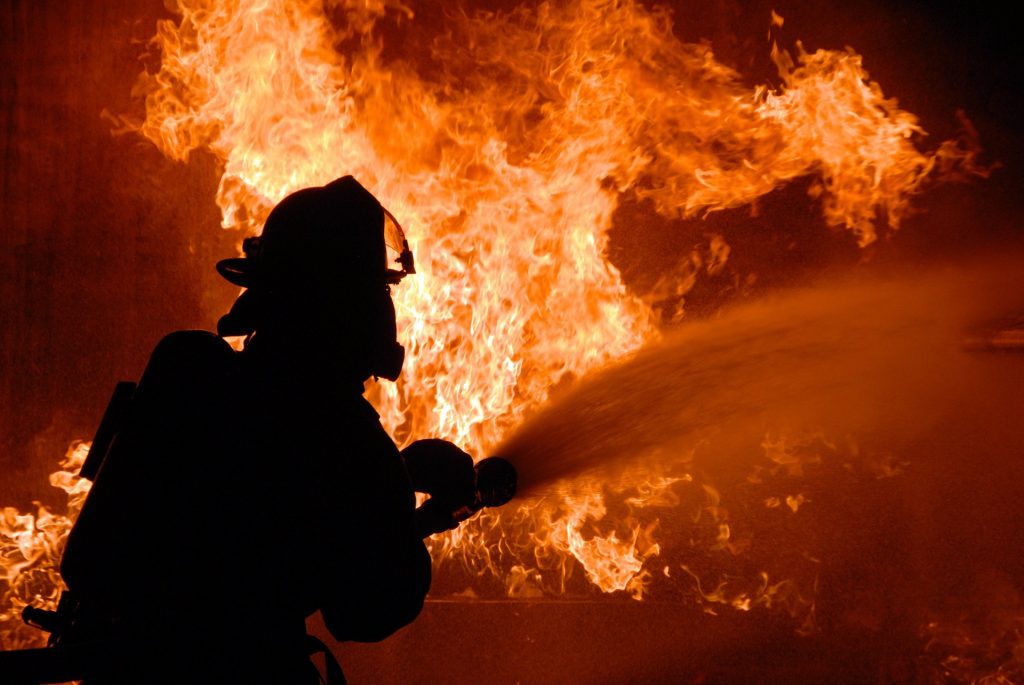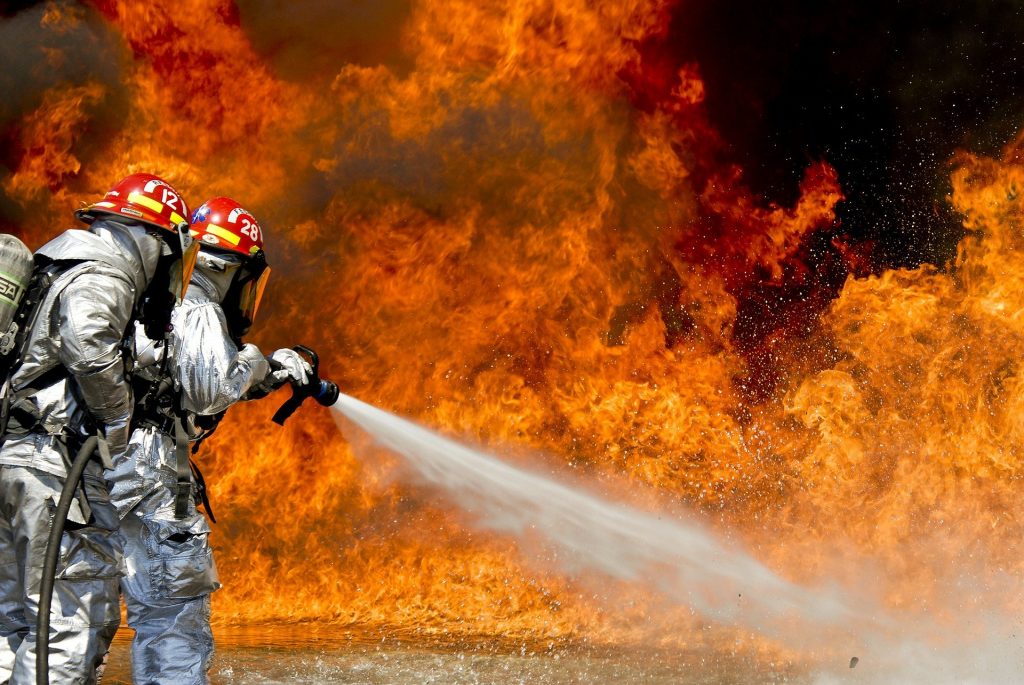What Is the Punishment for Arson?: Arson Laws by State

Arson is a serious property crime that has significant repercussions for offenders no matter what state you live in. Arson is almost always considered a felony due to its capacity to cause death and destruction. In this article, we will cover the punishments for arson and the differences in arson laws by state.
Typically, arson involves setting fire to a building. But it can also refer to intentionally burning other items, such as a car, a boat, or a forest. Arson is often committed when a person is committing insurance fraud. By burning a possession such as a house or a car, the person would then collect money from their insurance company.
Someone who commits arson is known as an arsonist. Arsonists typically use accelerants such as kerosene or gasoline to start the fire and focus it in a certain direction. The use of accelerants, though, is often how a person is caught when committing insurance fraud. To pull off the fraud, someone must make the fire appear to have been started by natural causes, or a cause out of their control. After a fire is done burning, law enforcement will investigate and attempt to identify any ignitable liquid residues (ILR), which would signify that an accelerant was used.
Arson Common Law
Historically, English common law viewed arson as maliciously burning someone else’s home. Burning your own home was not considered arson because it was believed that you had the right to destroy your property in any way.
Arson common law in the United States removed the element of a “dwelling.” U.S. common law views arson as burning real property without consent or with unlawful intent.
Degrees of Arson
There are three main degrees of arson that can be committed:
- First-degree arson – Burning a structure where people are typically present, such as a school
- Second-degree arson – Burning an unoccupied structure to claim insurance
- Third-degree arson – Burning an unoccupied structure or an unoccupied area, such as a forest or a field
Some states have fourth and fifth degrees of arson, and we will cover those below. In most cases, arson will be considered a felony, but it can also be prosecuted as a misdemeanor, destruction of property, or criminal mischief. In some cases, burglary charges can occur if the arson involved breaking and entering.

Sample of Arson Laws by State
Arson laws do not vary as much by state as some other subjects, such as gun control. Here we will highlight a few different states to get an idea of how the law is defined and what the penalties for arson are. Typically, the severity of the punishment for arson is determined by the extent of damage done and if anyone was harmed in the fire.
In some but not all states, a defense for arson can be that you are burning your own property. As long as no one is hurt and you do not cause damage to someone else’s property, some states like New York will accept your defense. If you attempt to collect insurance on your damages, though, then you have committed insurance fraud.
Alabama Arson Laws
There are three degrees of arson in Alabama. First-degree arson is when someone starts a fire in an occupied building. This offense is a Class A felony and can be prosecuted the same way as murder. It has a minimum jail sentence of ten years.
Second-degree arson in Alabama is when someone damages a building owned by another person. This is a Class B felony with a minimum sentence of two years and a maximum of 20 years in jail.
Third-degree arson is when there was no intent to cause fire damage to a building, but the fire was started as a result of reckless behavior. This offense is a misdemeanor in Alabama.
California Arson Laws
California has more breadth to its arson laws due to the many campgrounds and national forests in the state. One of the most famous arsonists was a California man named John Orr. The irony of this case is that Orr was a chief arson investigator. As an expert on arson, Orr was able to disguise his blazes without giving himself away. The Glendale fire department estimates that Orr started as many as 2,000 different fires, causing millions of dollars of property destruction and killing four people.
One of Orr’s victims was a lot owned by Warner Brothers, which destroyed the set of the television show “The Waltons.” Orr would often target hardware stores and fabric stores, which naturally had the ability to fuel a fire. John Orr may have gotten away with his carnage if not for his desire to be a novelist.
Orr began to give himself away by writing the book “Points of Origin,” which highlights a firefighter with an obsession for lighting his own blazes. The story follows an arson investigator who has the suspicion that the arsonist is one of his own. This scenario is exactly what got Orr caught, as a fellow firefighter arsonist.
In January 1987, there was a conference of arson investigators. During the conference, several different fires broke out around the city. Some at the conference felt that this could not be a coincidence and began to question whether the arsonist was one of their own.
Orr continued to go undetected, but in March 1989, there was another convention of arson experts, and again, fires began to break out in nearby towns. Investigators found the same accelerants as the previous conference: matches, cigarettes, and yellow paper. But this time, they also found a partial fingerprint. However, Orr continued to elude authorities.
It wasn’t until 1991 that investigators finally matched the partial fingerprint to Orr. To catch Orr in the act, the Bureau of Alcohol, Tobacco, and Firearms placed tracking devices on his car. By December, they had enough evidence to arrest him.
After Orr’s arrest, the 350-page manuscript for “Points of Origin” was found in his house. The book basically read as a confession by Orr. In it, details of a fire started in a department store that killed four people mirrored a 1984 fire in South Pasadena. The book also hinted at Orr’s motive—a sexual thrill from watching fires burn.
Orr’s defense team derided the idea of a novel being used as evidence, but it did not matter. A jury convicted Orr of murder for the 1984 fire in South Pasadena, along with over 20 other crimes, including a fire in Glendale that burned down 67 homes. Orr faced the death penalty but avoided it and was sentenced to life in prison in 1998.

Colorado Arson Laws
Colorado recognizes four degrees of arson. Each of these four crimes can be considered a felony.
Fourth-degree arson is when a person starts or maintains a fire on their own property or someone else’s property. If there is an endangered person on the premises, it is a Class 4 felony and can be punished by two to six years in jail. If there is more than $100 worth of property damaged, it is a Class 2 misdemeanor with a 12-month maximum sentence. Less than $100 worth of damage is a Class 3 misdemeanor with a maximum sentence of three months in jail.
Third-degree arson is reserved for insurance fraud cases. It is a Class 4 felony and carries a sentence between two and six years in jail.
Second-degree arson in Colorado is when a person knowingly damages or destroys another person’s property that is not a building or occupied structure. This is a Class 3 felony that carries a sentence of four to 12 years in jail.
First-degree arson is when someone knowingly damages or destroys any building owned by someone else or any occupied structure.
Florida Arson Laws
A person can be charged with first-degree arson in Florida for setting fire to a dwelling, a building where people are normally present, or a building where it should have been known to be occupied. Committing this offense is a first-degree felony in Florida and is punishable by up to 30 years in jail and a $15,000 fine.
If the arson causes harm to another person, additional misdemeanors can be charged. If the fire results in serious harm, a separate second-degree felony can be charged.
Second-degree arson does not involve an occupied building and carries a maximum sentence of 15 years in jail and a $10,000 fine.
Illinois Arson Laws
The burned property must be worth over $150 for valid arson charges. Arson is a Class 2 felony in Illinois at its base charge with a three to a seven-year prison sentence. If the arson is done at a residential home or house of worship, it is a Class 1 felony with a four to 15-year prison sentence.
Aggravated arson is a Class X felony with a six to 30-year prison sentence. Arson becomes aggravated arson if a person was inside the building, if someone was injured or a fireman or police officer was injured. In some cases, the sentence could be as high as 60 years in jail.
New York Arson Laws
New York separates its arson law into five different classes. The least severe of these is arson in the fifth degree, which is a Class A misdemeanor. A person is guilty of fifth-degree arson if they have intentionally damaged someone else’s property by causing a fire but causing no harm to individuals.
Arson in the fourth degree is a Class E felony in New York. The difference between fifth-degree arson and fourth-degree arson is recklessness. Fourth-degree arson carries a sentence of one to three years in prison.
Arson in the third degree is a Class C felony with a maximum sentence of 15 years and a minimum of one year in jail. A common example of third-degree arson in New York would be setting a fire for insurance fraud.
Arson in the second degree is a Class B felony with a prison sentence of five to 25 years. The distinction made for this crime is that the perpetrator could not have reasonably assumed that no one was in the building.
Arson in the first degree is a Class A felony and comes with a prison sentence of 15 to 25 years. First-degree arson in New York is similar to second-degree arson, with the distinction being that an incendiary device, such as a Molotov cocktail, was used to start the fire.
North Carolina Arson Laws
North Carolina has just two degrees of arson. First-degree arson is when a fire is set to an occupied building, while arson on unoccupied buildings is considered second-degree arson.
First-degree arson in North Carolina is a Class D felony and carries a maximum sentence of 160 months and a minimum sentence of 38 months in jail. Second-degree arson is a Class G felony and carries a minimum sentence of eight months and a maximum of 31 months in jail.

Firefighter Arsonists
John Orr was not alone in being a firefighter obsessed with starting blazes of their own. In 1985, a “massive conspiracy to burn down the city of Boston” was uncovered. The perpetrators were sentenced to six years in jail and included a veteran firefighter named Ray Norton Jr.
The arson ring was blamed for starting around 260 fires in Massachusetts from 1982 to 1984. The fires were started in vacant buildings and metal trash bins and were responsible for injuring over 300 people and destroying $22 million worth of property.
The arson ring was known to cheer on the blazes as the buildings burned. They were also under the impression that by setting fires, their local governments would respond by hiring more firefighters after a series of layoffs in the early 80s.
Arson and Insurance Fraud
One of the main reasons people commit arson is to collect insurance money. For example, let’s say Bob has a five million dollar insurance policy on a building. The building is falling apart, and Bob would not be able to sell the building to anywhere near what he could collect on his insurance policy. So, Bob decides to start a fire in the building and hopes to collect once it burns down.
Bob has committed arson, and he has committed insurance fraud, even though he owns the building. If there were any people present or if the fire could have spread to other buildings, Bob may be charged with a more severe degree of arson. Bob will face separate punishments for both his arson charge and his insurance fraud charge.
Chen Family Arson Ring
A common safety precaution most people abide by is to not leave the house with the oven on for fear of causing a fire. The Chen family decided to use this wisdom to their advantage by designing their fires to look like a cooking mishap, as fried chicken was left unattended in the oven.
An investigation into the family began from an anonymous tipster who claimed to know the site of the next fire. Once the family was put under the microscope, it was revealed that two fires had occurred at a business owned by the Chens. Soon after that fire, their two homes in San Jose and Stockton both burned down.
The key behind the scheme was that the Chens would take burned items from previous fires and place them in the new fires in order to make insurance claims all over again on the same items. Tyler Chen and his business associate, Ha Nguyen, had rented warehouses for their import and export business. The previously burned items were again placed in these warehouses to collect further insurance claims.
In all, the damages claimed totaled $5,653,665. Of that amount, $4,009,008 was paid out by insurance companies. Tyler Chen pleaded guilty to multiple counts of arson and insurance fraud. He was sentenced to 13 years in jail.
Tyler’s wife Kim pleaded guilty to insurance fraud and received a one-year sentence in county jail. Ha Nguyen pleaded guilty to arson and insurance fraud and was sentenced to eight years in jail. The three were also ordered by the court to pay restitution of $582,506.36.
Insurance Fraud Gone Wrong
One would think that buying an insurance policy and lighting your apartment on fire hours later would be a clear tip-off to the authorities. But that thought did not run through the mind of Jacksonville man Christopher Joseph Koepke. Koepke bought a $70,000 renter’s insurance policy and could not wait to start lighting multiple fires in his apartment.
To Koepke’s credit, he had already gotten away with likely insurance fraud in the past. Just six months prior, Koepke’s apartment was burned by a fire. He and his family collected the maximum amount of $40,000 from the insurance company three weeks after buying the policy.
Kopeke could not wait those three weeks this time around. After buying the policy, Koepke proceeded to buy a gas can from a local store. While the evidence against him was all circumstantial, a jury found him guilty of two separate counts of first-degree arson, five counts of second-degree arson, and one count of insurance fraud.
First-degree arson in Florida carries a maximum sentence of 30 years in jail, while second-degree arson comes with a maximum of 15 years. Punishment for insurance fraud in Florida can lead to a maximum of 30 years in jail and a $50,000 fine.



